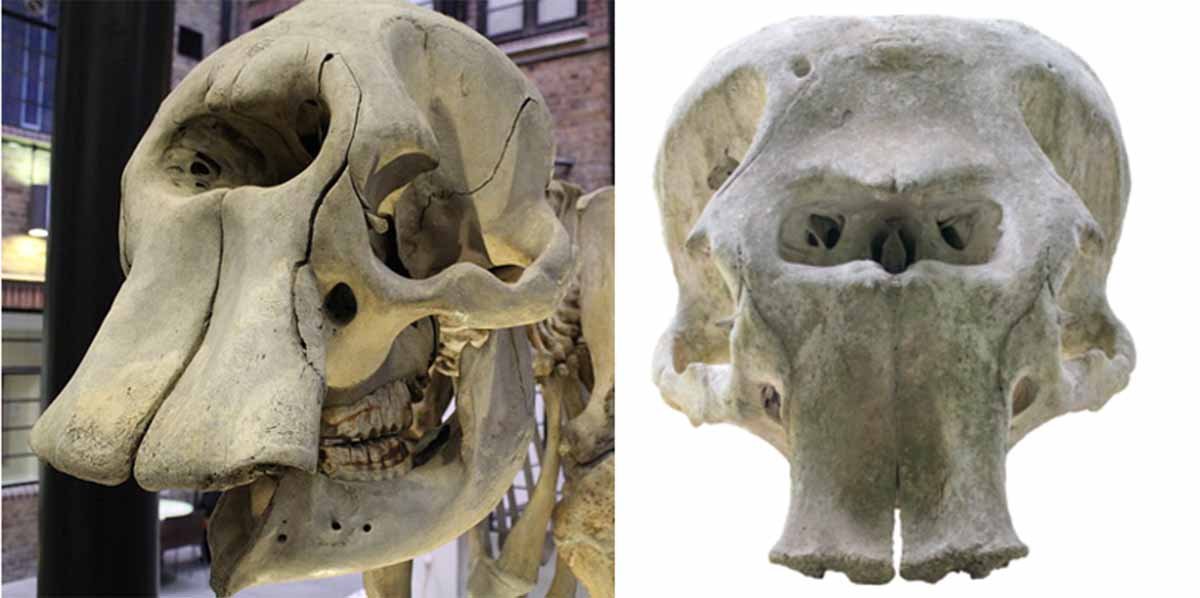Ever ponder the origin of our scariest nightmares? It might have been the remains of enormous prehistoric beasts for the ancient Greeks.
On the Greek island of Crete, remains of a Deinotherium giganteum, which is loosely translated as "really huge terrible beast," including its tusk, many teeth, and bones, have been discovered. The enormous mammal, which measured 15 feet (4.6 meters) tall at the shoulder and possessed tusks that were 4.5 feet (1.3 meters) long, was a distant ancestor of modern elephants. One of the biggest mammals to ever walk the face of the planet, it was enormous.
According to Charalampos Fassoulas, a geologist at the University of Crete's Natural History Museum, "This is the first finding in Crete and the south Aegean in general." We discovered the animal's entire tusk for the first time in Greece. The sediment where we uncovered the fossils is 8 to 9 million years old, though we haven't yet dated them.
According to skulls of Deinotherium giganteum discovered at other locations, it had a much larger nasal aperture in the middle of the head and was more primitive and massive than an elephant of the present.
The big hole in the middle of the skull today signals a distinct trunk to paleontologists. Deinotheriumskulls may have served as the inspiration for the myths the ancient Greeks had about the terrifying one-eyed Cyclops.
A Discussion of the Natural World
According to Adrienne Mayor's book The First Fossil Hunters: Paleontology in Greek and Roman Times, the Greeks and Romans exploited fossil evidence, such as the gigantic bones of long-extinct creatures, to both confirm and generate new tales.
"The idea that mythology explains the natural world is an old idea," said Thomas Strasser, an archaeologist at California State University, Sacramento who has extensively worked in Crete. The ancient Greeks were farmers, so they undoubtedly came across fossilized bones like these and attempted to explain them. However, you'll never be able to test the theory in a scientific way. It makes reasonable that people would imagine them as giants, monsters, sphinxes, and other such creatures given their lack of understanding of evolution, the scientist asserted.
In his epic account of Odysseus's struggles throughout his ten-year journey from Troy to his home country, Homer describes the traveler's encounter with the cyclops. He characterizes the Cyclops as a group of enormous, one-eyed, man-eating shepherds in The Odyssey. They occupied an island that Odysseus and a few of his soldiers occasionally visited in search of provisions. One of the Cyclops seized them, and he later ate a number of the guys. Only their intelligence and bravery prevented them from all becoming dinner. The monster was made inebriated by the captured travelers, who then managed to blind him and flee.
The Cyclops are said to be the sons of Gaia (earth) and Uranus (sky), according to a second tale. The three brothers evolved into the Olympian gods' blacksmiths, forging Poseidon's trident and Zeus' thunderbolts.
"Mayor makes a convincing case that the places where a lot of these myths originate occur in places where there are a lot of fossil beds," remarked Strasser. She also tells out that according to some tales, monsters spring from the ground during severe storms, which is something I had never considered but which makes sense given that the soil has disintegrated as a result of the storm and these bones have appeared.
A first century CE head of a Cyclops, part of the sculptures adorning the Roman Colosseum
Traveling the planet
Deinotheres, an extinct relative of the elephant, lived during the Miocene (23 to 5 million years ago) and Pliocene (five to 1.8 million years ago) eras in Europe, Asia, and Africa.
According to Fassoulas, the discovery of the remains on Crete suggests that the mammal traveled through more of Europe than was previously thought. Fassoulas oversaw the excavation and is in head of the museum's paleontology section.
He contends that during times when sea levels were lower, the creatures traveled from Turkey to Crete by swimming and island-hopping across the southern Aegean Sea. Today's elephants are among the several herbivores with remarkable swimming abilities.
According to him, the creatures likely traveled to Crete from Turkey via the islands of Rhodes and Karpathos.
Unlike modern elephants, the Deinotherium's tusks emerged from its lower jaw and curved downward and backward rather than upward and outward. The tusks' wear patterns indicate that they were likely used to remove bark from trees and perhaps to dig up plants.
"We know that this animal lived in a forest environment based on studies in northern and eastern Europe," Fassoulas added. In a habitat like this, the animal was "using his ground-faced tusk to dig, settle the branches and bushes, and in general to find his food."
Fassoulas is urging farmers to be on the lookout for further fossils, which were discovered as ground was being cleared for an olive crop.







